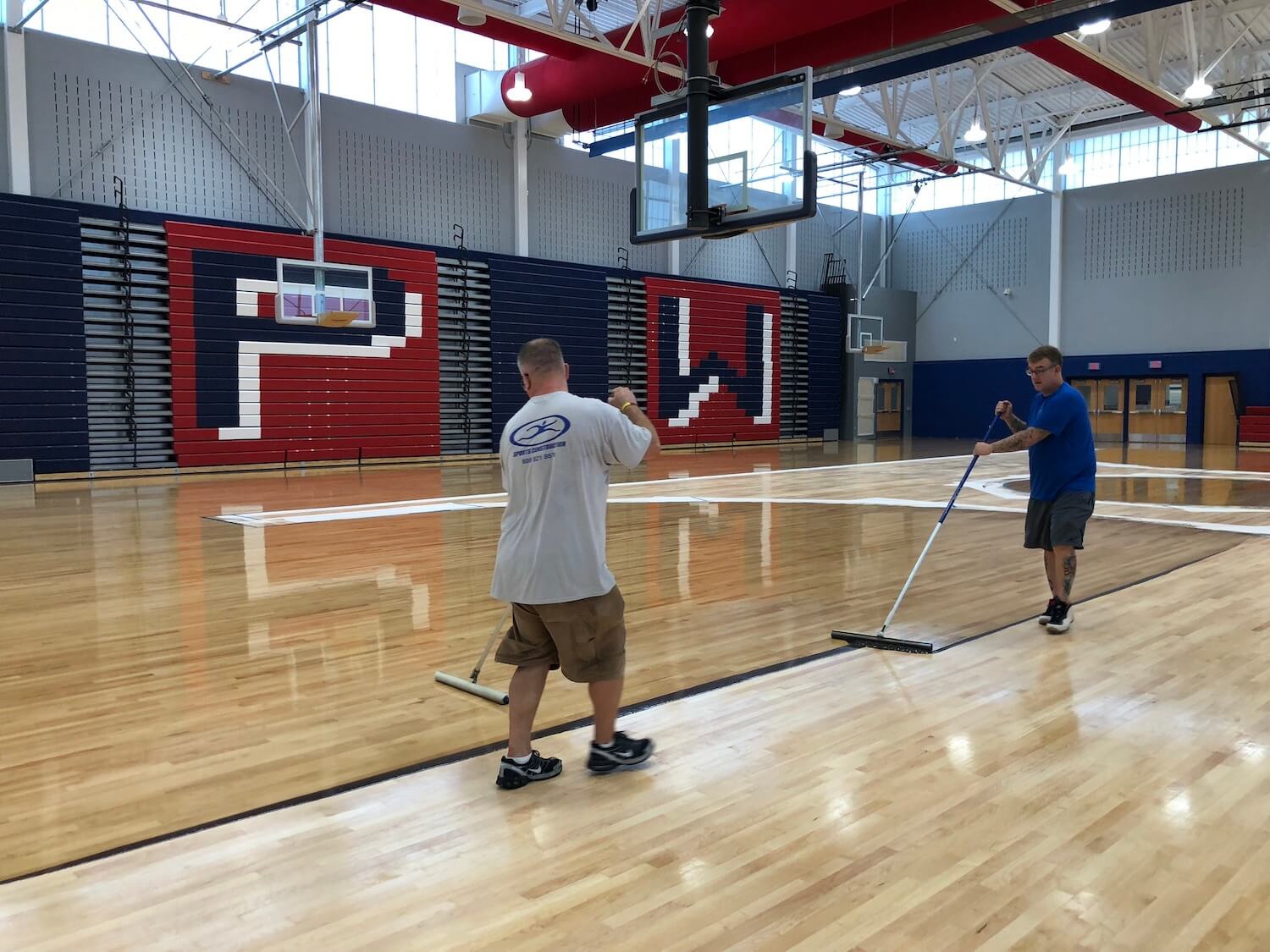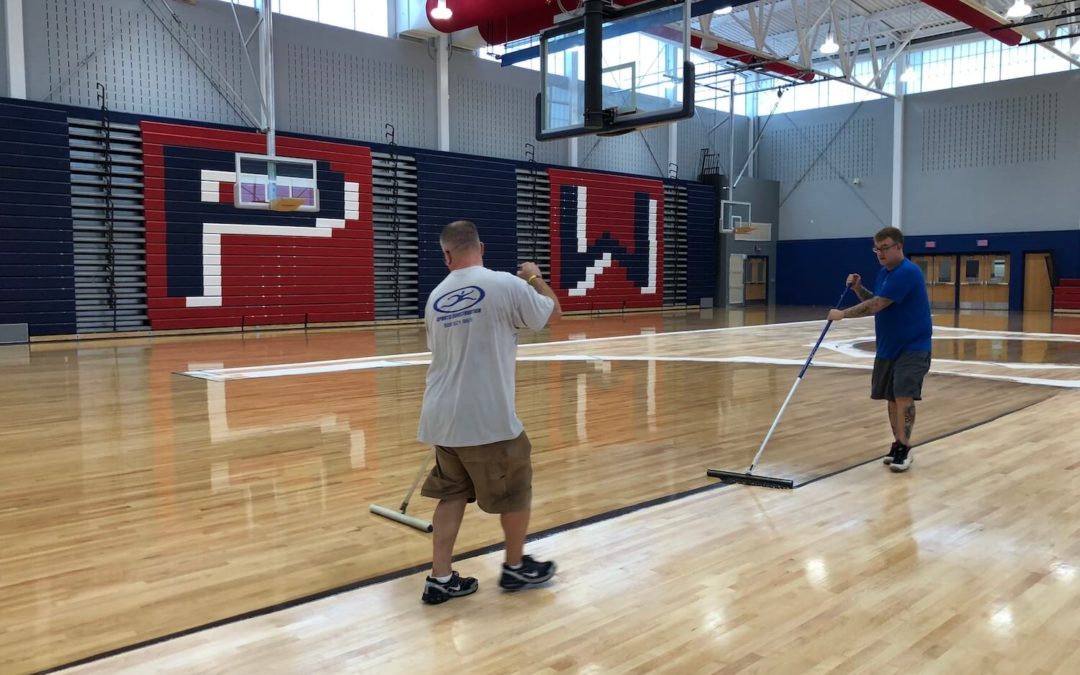Refinishing vs Replacing A Gym Floor
In this blog post, the Miller Sports team explores the advantages and considerations of refinishing vs replacing a gym floor. Your gymnasium floor is not just a surface; it’s the foundation of countless athletic endeavors, school events, and community gatherings. Over time, however, the wear and tear can become evident, raising the question of whether to refinish or replace the hardwood floor.


Refinishing: Renewing the Beauty
Refinishing a gym floor involves sanding down the existing surface to remove imperfections, applying a new finish, and often adding fresh graphics and lines. This process can be a cost-effective solution, breathing new life into your gymnasium without the extensive labor and expense of a full replacement. Refinishing is ideal for addressing surface-level issues like scratches, scuffs, and minor dents while retaining the original floor structure.
Benefits of Refinishing:
-
- Cost-Effective: Refinishing is generally more budget-friendly than a full replacement, making it an attractive option for institutions with financial constraints.
- Preserving Heritage: If your gymnasium has a rich history, refinishing allows you to preserve the original hardwood, maintaining the character and tradition of the space.
- Quick Turnaround: Compared to the time-intensive process of replacing a floor, refinishing is quicker, minimizing disruptions to your facility’s operations.
Considerations for Refinishing:
-
- Condition of Subfloor: Refinishing works best when the subfloor is in good condition. If there are structural issues, replacement may be a more viable long-term solution.
- Depth of Damage: Refinishing is effective for surface-level damages. If the hardwood is severely warped or damaged, replacement might be necessary.
Replacing: A Long-Term Investment
When a gymnasium floor has reached the end of its lifecycle, replacement becomes a strategic investment in the future. This involves removing the existing floor entirely and installing a new one, potentially with upgraded materials and features.

